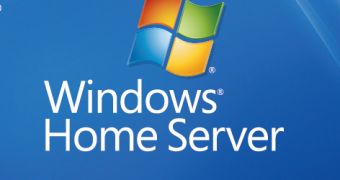Microsoft has made available for download the first Beta build of the third power Pack for its home server operating system. When it comes down to Windows Home Server, Power Packs are the equivalent of Service Packs for Windows client and server operating systems. On July 17th, 2009, Microsoft announced that the Beta build of Windows Home Server PP3 was live on Connect and available for download for the testers that were already running a previous release of the home server operating system. Potential testers need to visit Microsoft Connect and sign up for the Beta testing process of Windows Home Server PP3. Microsoft noted that PP3 came to the table with a variety of enhancements and new features, and that it had been specifically tailored to the next iteration of the Windows client.
“Windows Home Server performs a full image-based backup of Windows 7-based computers, allowing for a complete computer recovery in the case of a hard drive failure, or restoration of a single file or folder in the event of accidental deletion or loss. After the Windows Home Server Connector software has been installed on a computer running Windows 7, Windows 7 Backup warnings will be suppressed and users will no longer receive a notification to back up their computer. Windows Home Server can back up Windows XP SP2 or later, Windows Vista and Windows 7-based computers,” revealed Steven Leonard, senior product manager for Windows Home Server.
Improvements to Windows Home Server via PP3 designed to make the OS play nice with Windows 7 go beyond backup. Microsoft explained that, with PP3, Windows Home Server was capable of integrating Windows 7 Libraries, a new feature specific to the successor of Windows Vista. At the same time, the server will also embrace apps that make use of the Windows 7 libraries.
“Power Pack 3 Beta will add Music, Photos and Videos shared folders on the home server to Windows 7 Libraries making the content available for applications such as Windows Explorer, Windows Media Center, Windows Media Player and other applications that use Windows 7 Libraries. This allows users to quickly access all their content in one organized place that is always available, searchable and expandable. Users can also search a specific library without having to know where the files are stored,” Leonard added.
Users of Windows Home Server should expect a boost in query search times, indexing times and reliability as Microsoft is delivering Windows Search 4 with PP3. The enhancements should especially kick in in scenarios in which users are performing searches that spread across multiple computers. Microsoft promised that the search experience would benefit from a boost in speed because of extended remote discovery and that, along with document libraries, users would also be able to search files encrypted with Encrypting File System (EFS).
“Last March, Power Pack 2 added functionality that allowed Windows Media Center and Media Center Extenders to easily access the content on a home server. Power Pack 3 Beta builds on this functionality,” Leonard stated. “When the Windows Home Server Connector software is installed or updated on a Windows Media Center computer, the next time a user starts Windows Media Center they will be prompted to install the Windows Media Center Connector. Users will notice a new Home Server selection in Windows Media Center menu.”
Enhanced integration with Windows Media Center means that users will get the option to move all their TV recorded content, either show by show, or by seasons, on the home server via the TV Archive. Power Pack 3 will tailor TV materials to the specific resolution of the device it is destined for. According to Microsoft, optimizations are in place for Windows Media Center machines, Windows Mobile phones and Zune digital media players, but it is also capable of adapting to all devices that support WMV files.
With Power Pack 3 Microsoft has also extended the monitoring capabilities of Windows Home Server. The Redmond company noted that Console Quick View was capable of offering statistics for a variety of metrics indicating home server usage, including: “Storage – Pie chart listing the percentage allocation of the home server storage; Drives – List, size and health of hard drives installed on the home server; · Backup – List of computers being backed up and their current backup status; Shared Folders – List of Shared Folders by name with health status and duplication status; Media Counters – Count of music, photos, videos and recorded TV files on the home server; Health – Health of the entire home network; and Home Server – System information of the home server’s hardware and manufacturer info,” Leonard said.
In addition to the enhancements introduced for Windows 7, Microsoft has also tailored Windows Home Server Power Pack 3 to netbook computers. Users will not suffer a depreciation of experience when dealing with smaller screen sizes and lower resolutions.
“Timing of the Power Pack 3 final release has not been determined. With your help to test the Beta, we hope to release the update prior to the Windows 7 General Availability date of October 22. Power Pack 3 will be a free update to existing Windows Home Server users via Windows Update,” Leonard concluded.

 14 DAY TRIAL //
14 DAY TRIAL //